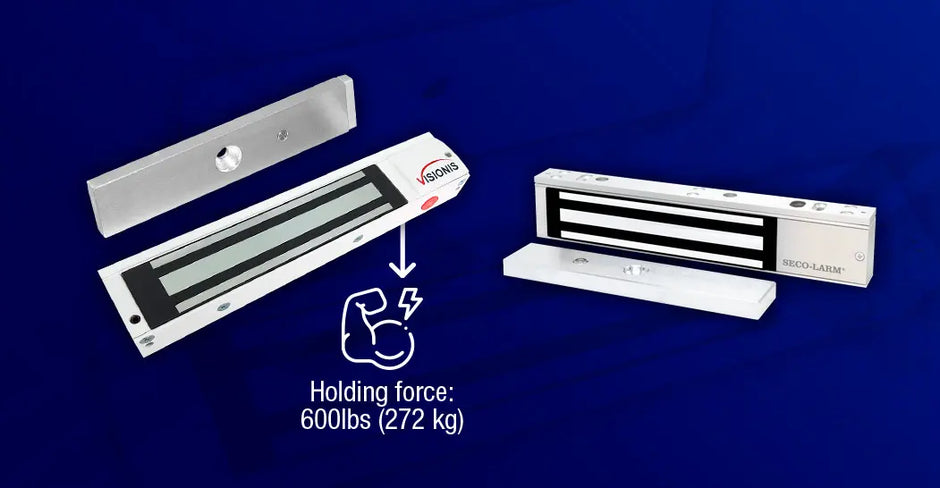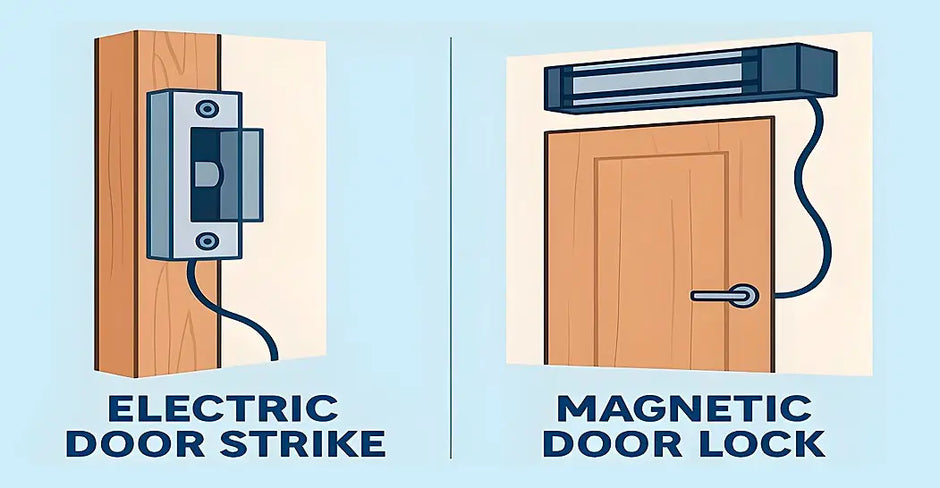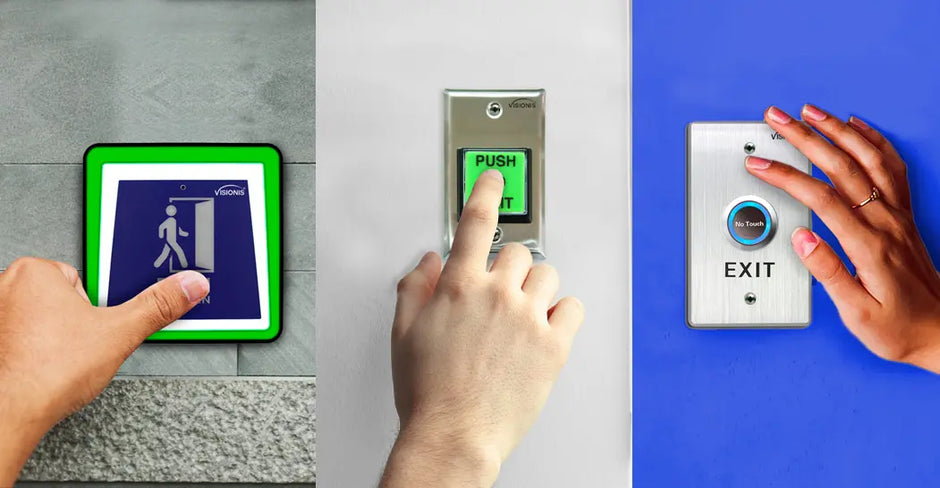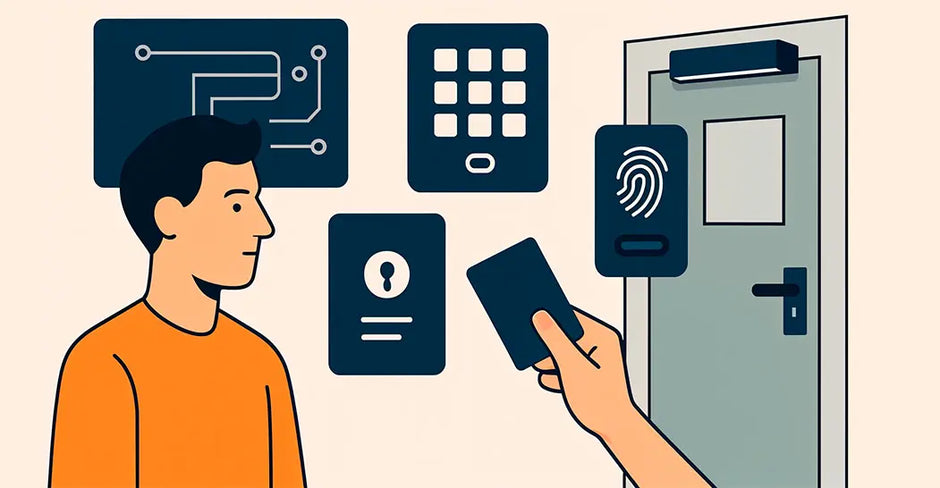Access Control System – FPC Security – USA Based Company
For centuries people have locked their rooms and buildings using keys. The keys, usually brass or metal, come in all shapes and sizes and, for the most part, they work well. But all keys have significant flaws when it comes to security. They can be lost, stolen or copied. Keys also can break or the mechanism can fail to operate effectively. Door locks can be picked.
But today’s technology using electronic building access control systems eliminates those weaknesses. Using a door access control system, owners of buildings including offices, schools or homes can ensure the safety of their property more effectively than ever before. Here is an in-depth look at today’s building access control systems.
What is an access control system?
Access control system means restricting the people who can gain entry to a house, room, business office, school. Only authorized people will be granted such access at certain times and under certain conditions.
A traditional brass or metal key is a long-used form of access control; only people who are in possession of a key designed to fit a specific lock can gain entry to the property. When the term access control is used today, however, it generally refers to an electronic form of door access control.
Rather than a physical key that is placed in a lock and turned, the means of access is electronic.
As a result, only those people who have possession of an electronic means of access are able to gain entry. They can do so in a number of ways, such as by using a card, by knowing the numeric code to punch into a keypad, or even by placing their finger on a pad.
A wide variety of electronic means of access control is available today. Most are attached to a door or a nearby wall and are linked by an access control cable or a wireless signal to a central computer system.
An example of the use of electronic door access control with which many people are likely to be familiar is the hospitality industry. For the most part, hotels and motels have moved away from the traditional door access control that was gained by using a physical key that often was attached to a large wooden slab so that it would not easily be misplaced.
Today many in the hospitality industry have moved to door access control using electronic cards, which look like credit cards, that are used to gain access to rooms.

Access Control Sytem – Basic components
Because today’s access control systems cover a wide range of types, the components in each also vary. Here’s a look at some of the parts that in most cases constitute an access control system.
• Access cards
Access cards are used to gain entry into a room, house, building or anywhere that entry is limited to only specific people. Almost all are about the size of a credit card. The big difference among them comes in the information that is printed on them or embedded in a chip in the cards.
Many cards allow a photograph and a scannable code to be printed on them. Others contain features that prevent them from easily being copied, such as holograms and special inks that show up only under ultra-violet light.
• Card readers
In order to obtain entry to an area, a user usually swipes an access card into a card reader on the door, inserts it briefly into the reader, or places it in front of the reader so that the card is scanned.
In all cases, the machine reads the information that is on the card. The card information is compared with data on a central computer that is accessed by the unit, usually by means of access control cable or a wireless signal.
If the two sets of data match, the locking mechanism is released and entry is gained.
• Keypads
Instead of — or sometimes in addition to — the use of cards, some systems have keypads on which a code, such as a PIN, can be entered. In a process that is similar to that on card readers, the system, using a wireless signal or access control cable connected to a central computer, checks the validity of the code and releases the locking mechanism if the code is recognized.
• Electronic lock hardware
The mechanism that locks or unlocks access to a door, cabinet or other area using an electronic system is usually similar to that for a metal key. It functions by means of a deadbolt, combination lever set, spring latch, or similar lock.
• Magnetic locks
Magnetic locks are often installed on entryways, particularly glass doors or outside gates. Their advantage is that they have no moving parts and are therefore less likely to wear out over time. Once they receive an electronic signal, they are immediately released, allowing them to swing open.
• Field panels
Access control field panels are the devices that are installed to allow door access control or at an entrance area to a building. They come in a variety of sizes and shapes but are the means by which a person wishing to gain access to the area conveys information to the processing unit.
Such information might be conveyed by means of a keypad, a card reader, a fingerprint or other means.
That information is transferred to a central computer by means of an access control cable or by a wireless signal. Some field panels also include a screen with instructions to the person wishing to gain access and also showing whether the attempt to gain access has been successful or not.
Field panels can also be operated remotely by means of a wireless signal. Some field panels can also be programmed directly without the need for another system.
• Server Computer
When a card reader is presented to a door access control unit, or when information is keyed in on a pad, the information is usually conveyed by an access control cable or a wireless signal to a server computer on which a central list is stored.
The security system checks through the list, comparing the information sent from the field panel with the central list.
If they match, a message is returned authorizing the system to unlock the door or entryway.
• Biometric systems
Advanced technology has introduced biometric access-control systems for door access control in recent years. These systems are activated by using unique physical characteristics, such as fingerprints, hand recognition, and retinal eye scanners.
These characteristics obviously cannot be transferred, which can be an asset or a drawback, depending on the nature of the access that needs to be controlled. It is easy to learn how to install a biometric access control system as the technology generally is built into the system itself.
Access Control Security Basic System
A system can be as basic as one that involves pressing a button and gaining access to an area. As the system becomes more complex, a wide range of operations becomes possible, with each step going up the ladder of technological sophistication.
Some involve a standalone proximity access control system. Popular systems also provide IP access control, which can be monitored and controlled over the Internet, using a smartphone, tablet or laptop. Other systems can be linked to a central system using access control cable, which is not exposed to hacking.
Access Control Units Installation
Access-control units can be installed almost anywhere that an area can be closed off, whether the access is gained from the outside or from the inside of a building.
Installing an access-control kit takes only a few hours. All the access control supplies you are likely to need, including access control cable, are available from Miami-based FPC-Security.com, an independent company that has been in the security business for over 10 years.
Whether you are looking to install a simple unit or a more sophisticated one, FPC provides a wide range of top quality electronic security products at affordable prices.
Access Control Setup and operation
A list of authorized users is set up on the server computer. Those operating the computer are able to key in relevant data and can update the list at any time. A wide variety of parameters can be entered into the server computer.
This will help to restrict access to certain people using certain entry points at certain times. The main door might be programmed to allow access only from, say, 8 a.m. to 5 p.m. to all personnel working in the building. Between the hours of 5 p.m. and 8 a.m. entry might be restricted only to security staff.
Door status monitoring
A door access control unit can be monitored from a distance by using access control cable or by IP access control. For example, a homeowner who is in another city, state or even country can monitor the status of a door unit as long as Internet access is available.
Door monitoring for a business could include determining whether a door has been left open for an unreasonably long time or entry has been forced.
Door Access Control Reporting
Many systems can be programmed to produce reports on the use of an entryway. Such reports will record how often a door was used, how many times it was left open for a lengthy period of time.
Automatic unlocking
Using an automatic unlocking feature, entry to a business, school or other building can be open to all people at certain times, such as during business hours. Similarly, a smartphone can be set to unlock your house door as you approach it. As a result, you do not have to actively use your phone to unlock the door.
This feature works using the GPS on your phone. The system determines when you leave your house and how close you are to your door when you return. Doing so reduces the possibility of accidentally unlocking your door.
Daily operations
Depending on the nature of the access being controlled, staff will need to update the data on the central computer. They will also need to monitor the system, on a regular basis to determine such aspects as whether failures have occurred, whether unauthorized users have inadvertently gained entry, or who has entered a building in which a problem has occurred.







